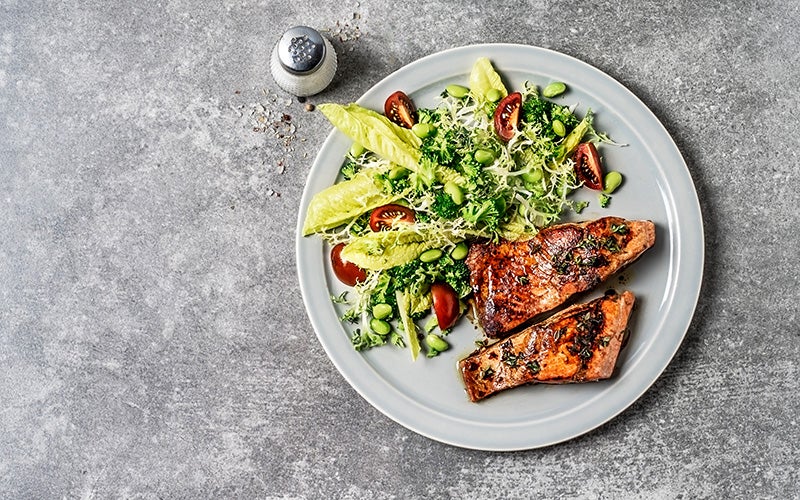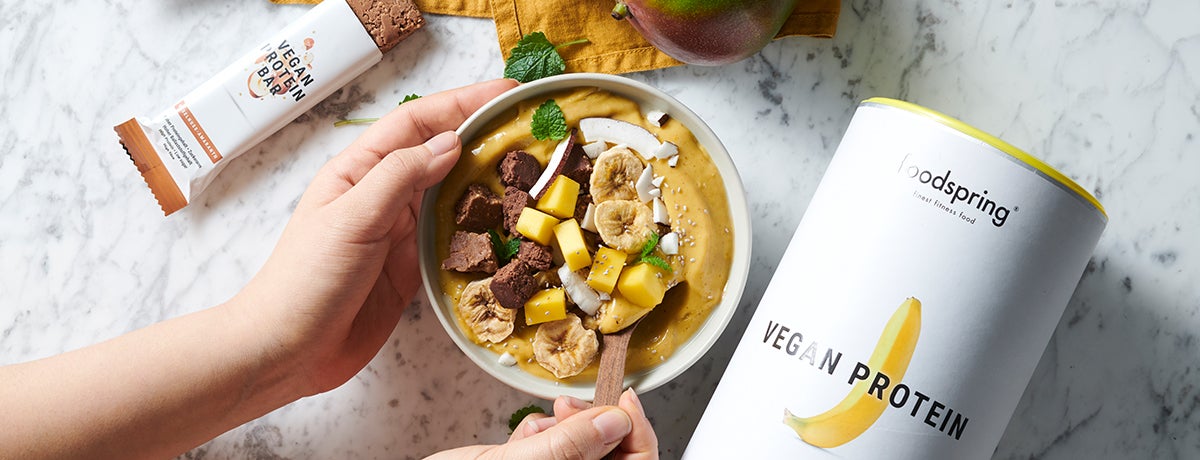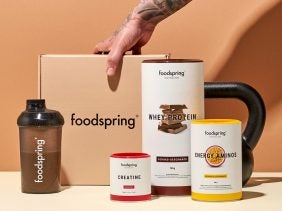10 Healthy Foods To Help You Get More Vitamin D
 ©Claudia Totir
©Claudia Totir
When fall arrives, the sudden drop in temperature and sunlight leaves us feeling tired and completely unenergized. With the warm, bright days of September long gone, your body is getting less sunshine and therefore less vitamin D, and that can have a big impact on the way you feel. Find out more about vitamin D below.
What is vitamin D?
Vitamin D is known as the sunshine vitamin. It’s fat-soluble (which means it dissolves in fat) and has a unique characteristic: the body produces it by itself. Problem is, vitamin D production only happens if you’re getting sufficient exposure to sunlight. UV-B radiation needs to come into contact with the skin for us to begin producing vitamin D. For this reason, it’s actually more of a hormone than a vitamin.
Vitamin D3 and vitamin D2
Calcitriol is the active form of vitamin D. Before it can be used by the body, certain vitamin D compounds must first be processed and converted by the kidneys.
Vitamin D is a generic term for various compounds, like vitamin D3 and vitamin D2. These compounds are precursors to calcitriol and must be consumed or obtained in order to develop it. Vitamin D2 can be found in trace amounts in foods of plant origin.
What’s the advantage of taking vitamin D3? While vitamin D2 must first be converted into vitamin D3 during an intermediate stage before it becomes effective, vitamin D3 is already in its active form, and can easily be converted into something our bodies can store.
Do you feel drained and unmotivated as soon as cold weather rolls around? You may have a vitamin D deficiency. Sunlight is essential to synthesizing the vitamin D compounds and precursors already in your body. If you’re living in a place that doesn’t give you enough sunlight in the cold months, it’s all the more crucial that you make sure you’re getting enough vitamin D. It’s a piece of cake with our D3K2 Vitamin Drops. Vitamin D performs tons of functions in your metabolism and can make all the difference for both your mental health and physical health.
Daily vitamin D requirements
According to the NIH (National Institutes of Health), we need about 5 µg (micrograms) of vitamin D per day. If your access to sunlight is limited, you can get this amount of the nutrient from just 100g of raw tuna.
We begin to synthesize vitamin D precursors (the building blocks of vitamin D) like vitamin D3 and D2 under UV-B radiation of wavelengths between 290 nm and 315 nm (nanometers or billionths of a meter). At latitudes above 35 degrees, the duration and intensity of this radiation decreases, making it harder to get enough sunlight during the less sunny seasons outside of a certain latitude. In the UK, most people are able to get what they need from the sun from March to October. Only 10-20% of the vitamin D your body produces can be ingested through food.
What foods contain vitamin D?
If you are having trouble obtaining enough vitamin D from your diet, these vitamin-D rich foods may really help.
Top 10 vitamin D-rich foods
| µg per 100 g | |
| Herring | 26,35 µg |
| Trout | 22,00 µg |
| Salmon | 16,30 µg |
| Sardines | 10,78 µg |
| Oysters | 8,00 µg |
| Tuna | 4,54 µg |
| Cheese | 3,13 µg |
| Porcini mushrooms | 3,10 µg |
| Eggs | 2,93 µg |
| Cremini mushrooms | 1,94 µg |
Effects of vitamin D
Here’s a brief summary of the many central health functions of vitamin D:
Vitamin D helps:
- absorb and process calcium and phosphorus.
Our bodies absorb calcium and phosphorus in the small intestine. A sufficient amount of vitamin D regulates the intake of these trace elements. Both calcium and phosphorus greatly contribute to tooth health and bone health.
- establish a normal level of calcium in the blood.
Vitamin D and calcium go hand in hand. Having enough D ensures the body always has access to a proper supply of calcium. Vitamin D deficiencies usually result in calcium deficiencies. Without vitamin D, you’ll excrete the calcium you intake, without absorbing any.
- preserve normal muscle functions.
That’s right – sun exposure will help you reach your muscle building goals! Your muscles need a sufficient supply of nutrients – especially vitamin D – to grow.
According to the US National Academy of Medicine (NAM), research shows that many athletes suffer from vitamin D deficiencies. If you exercise regularly, your vitamin D intake is health information you need to keep track of.
Along with vitamins, protein also plays a major role in muscle growth. You simply can’t reach your fitness goals without it. If you exercise regularly and have a difficult time getting enough protein, may we recommend our fitness snacks to take care of it in a snap. Whether you’re looking for a protein-rich breakfast or a mouthwatering snack, you’re going to find something here that’s right for you.

Vitamin D deficiency
Winter and vitamin D deficiency go hand in hand. Even beyond Europe, numerous studies have proven that this is a global health problem. According to estimates from the annual vitamin D seminar, 50 percent of older adults in Western Europe and North America do not get enough vitamin D. 60 percent of the remaining population also have low levels of the vitamin, which is why health experts from around the world are working to increase awareness about doses of vitamin D and sources of vitamin D.
Symptoms of vitamin D deficiency
- Fatigue
- Loss of appetite
- Anxiety
- Depression
- Muscle weakness
- Sleep disorders
- Numbness and tingling sensations
How do you detect a deficiency?
If you’re exhibiting any of these symptoms, especially during the winter, ask your health care provider to perform a blood test to see what’s up. During this test, they’ll analyze your blood levels for the hydrolyzed (or broken down) form of vitamin D. This will show them how much vitamin D your body created in the last month, and indicate whether or not you have any problems.
How long do our bodies store vitamin D?
Though our bodies are able to stock up on vitamin D during the sunny months, this reserve usually isn’t enough to meet the demands of winter. That’s why experts recommend dietary supplements during the winter months, no matter how much sunlight you get year-round.
Vitamin D supplements
There are several ways to boost your vitamin D levels. Check out the most common dietary supplements (and an overview of their active ingredients) in the list below.
- Medications
- Injections
- Pills
- Drops
- Fortified foods
Vitamin D2, D3, and vegan D3 are three active ingredients that are present in most dietary supplements. Vitamin D2 can be found in plants (and plant products). Vitamin D3 is present in animal products and is easier to absorb according to numerous studies.
Dosage of vitamin D
The doses in most vitamin D supplements are based on the National Institutes of Health recommended dietary allowance of 5 µg/day. Depending on the severity of your deficiency, you may want to ask your health care provider what dose is right for you.
It’s also important to remember that vitamin D is fat soluble, meaning you should eat it with a meal that’s rich in fats to ensure your body absorbs it properly.
Summary
Vitamin D gets a lot of attention because it’s so important. Research has proven how essential it is for feeling both physically and mentally well. The nutrient also ensures your muscles are in perfect working order, and that they continue to grow without any issues. If you feel fatigued or anxious during the colder months, those may be signs that you’re suffering from a vitamin D deficiency. Ask your doctor or health information provider if a vitamin D supplement may be right for you. And always keep an eye on your vitamin D levels, especially if you don’t get a lot of sun exposure.
Learn more from foodspring:
- Everything you never knew about the benefits of vitamins
- Vitamin B12: Everything you need to know!
- How to boost your immune system: Try our 9 tips!
- Essential Minerals: What are they and why are they important?
Sources for this article
We at foodspring use only high-quality sources, including peer-reviewed studies, to support the facts within our articles. Read our editorial policy to learn more about how we fact-check and keep our content accurate, reliable, and trustworthy.

































